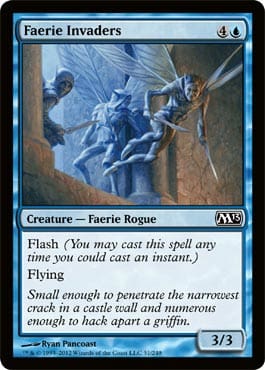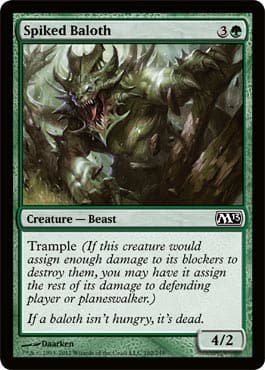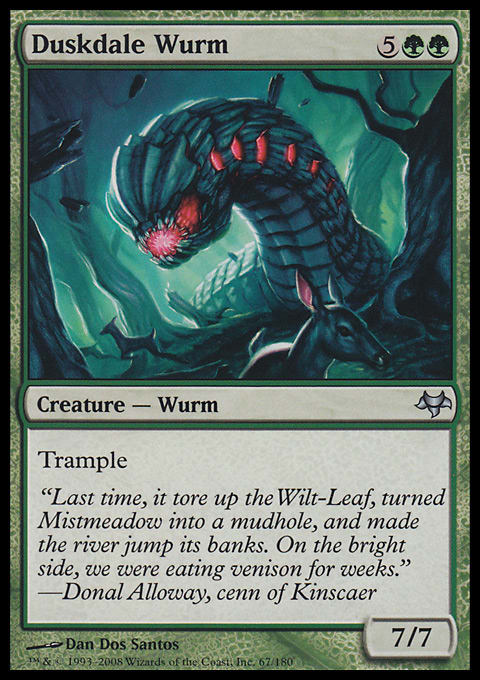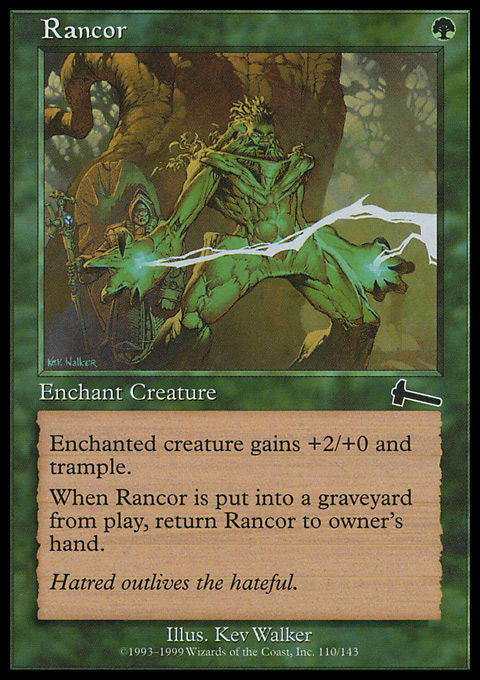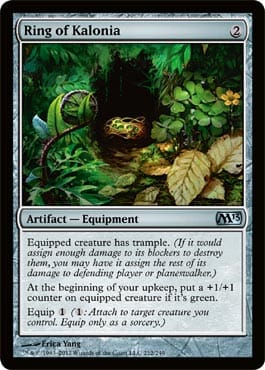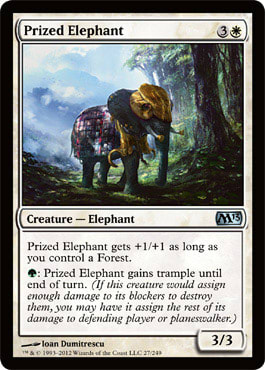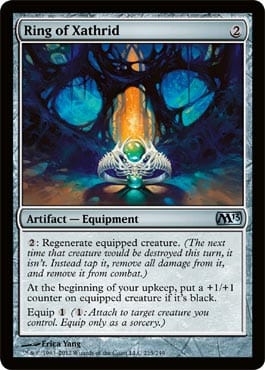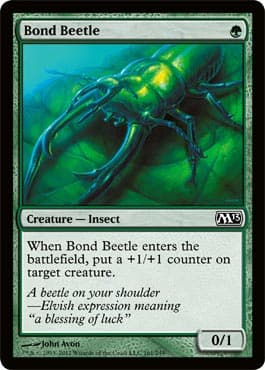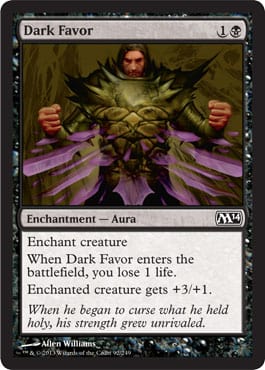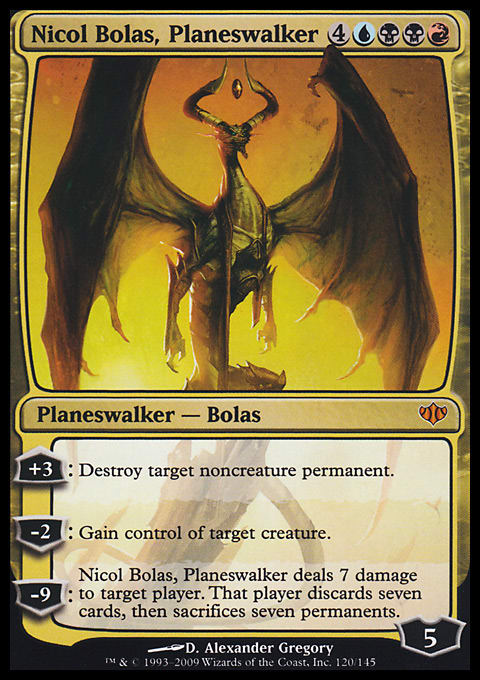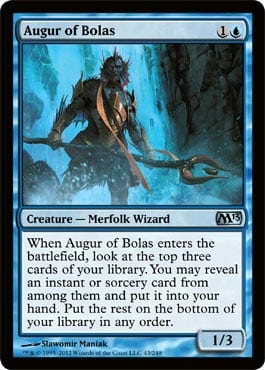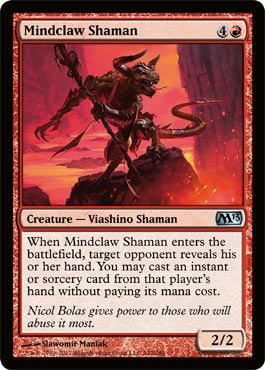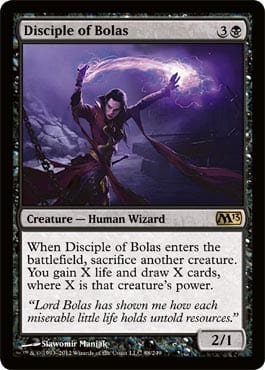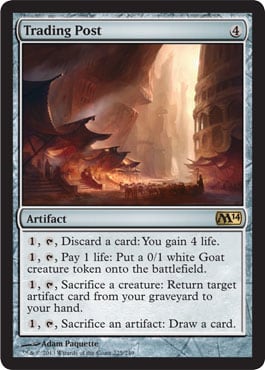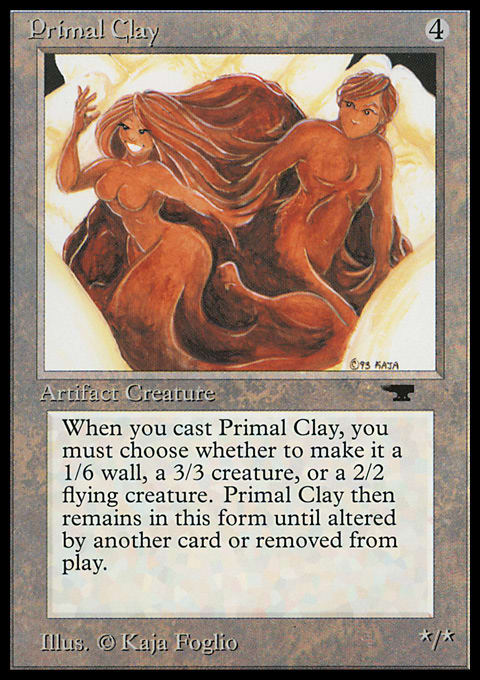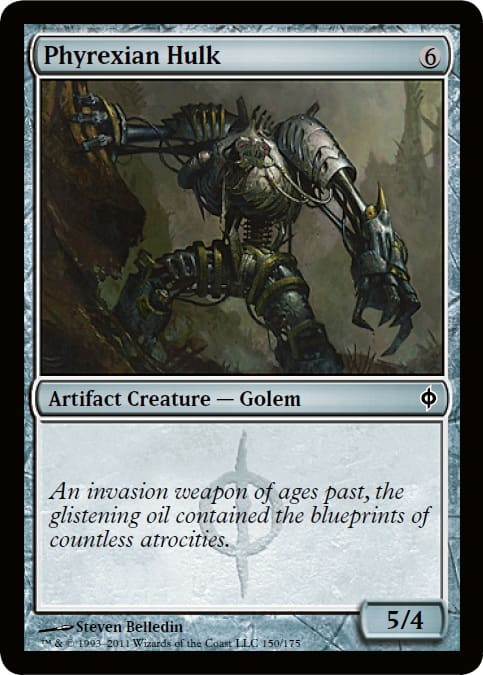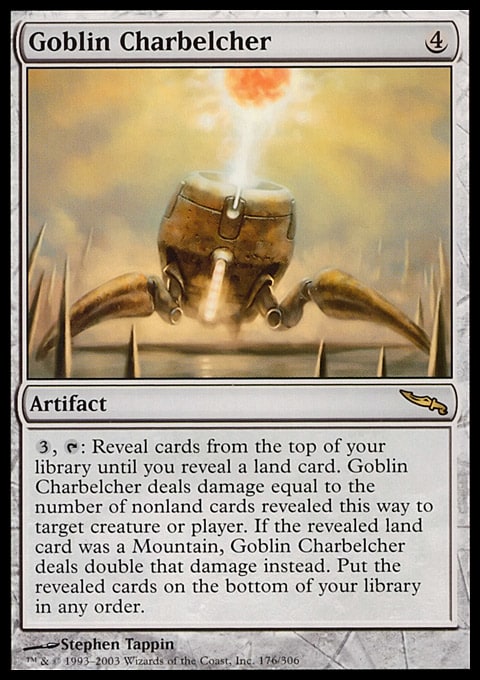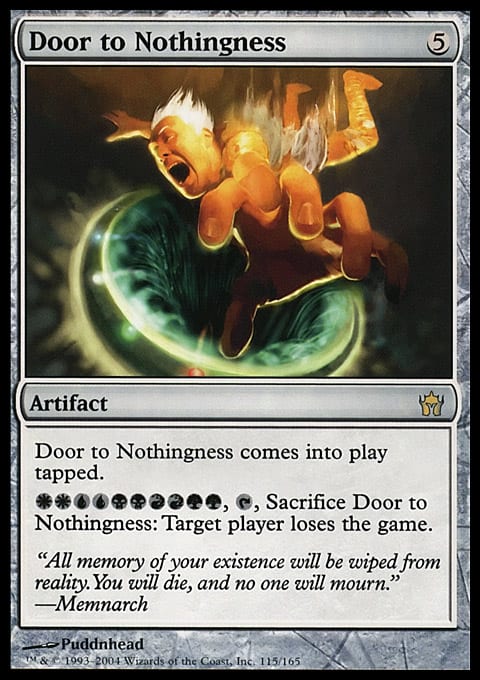Today marks the final chapter of what has been, far and away, the longest set review I’ve ever put my time into, and I wonder how the amount of material has gone over.
[poll id=197]
If you have other ideas, please share them in the comments!
Now unfortunately, I don’t have your answers on hand for this review, so I’ll finish it in the same manner as the rest of the series, and that means it’s time for an overview.
It Ain’t Easy Being Green
Green certainly isn’t the color with the smallest slice of the color pie, but it often ends up lacking appeal for seasoned tournament goers. The issue is that green is straightforward both philosophically and in implementation. You play creatures, you attack with them, and you block with them. Green has pump spells, but excepting Lightning Bolt interactions, those only affect combat, and mana acceleration similarly just goes to playing bigger creatures. The basic gameplay here certainly isn’t something you want to lose; creature combat is the most fun part of Magic for the majority of the audience, and it is among the central reasons that new players are so drawn to green. Still, when designing Limited and Constructed formats that are going to be played at a high level, you certainly don’t want an entire fifth of the color pie to turn off your target audience.
Luckily, the teams working on Magic 2013 have done a fantastic job at expanding the color’s repertoire in a multitude of formats without straying too far from what makes green green. As far as cracking boosters goes, Roaring Primadox is excellent at attracting Johnnies to the color. Meanwhile, Mwonvuli Beast Tracker and Prey Upon allow their users to feel in control of things, and while low in power level, Fog and Serpent's Gift highlight times when their users outsmart the opposition. Flash creatures fulfill this last goal well, but they have the downside of making players reluctant to attack. And if I were putting that at common, I’d rather have it in green than in the ability’s secondary color.
That said, the fact that Yeva, Nature's Herald is featured so prominently between intro packs and Duels of the Planeswalkers should help to alleviate some confusion. Speaking of Yeva, she offers some of that same surprising gameplay for Standard and potentially older formats.
Archetypal Characters
Developing a deep Limited format takes a whole lot of fine tuning, but the two easiest ways to go wrong are to let all of the decks play the same way or to seed too few decks in the first place. To avoid these issues, development teams will usually create holes to fill, often one for each two-color combination. The Magic 2013 development team went above and beyond by seeding not one, but two archetypes per color combo, and while not every archetype comparison is like night and day, the team’s work has nonetheless kept the surprises coming.
Gruul
While R/G is headlined by the new 3/3 beatdown deck we already discussed, the color combination is still capable of playing its classic burn-plus-fatties game plan. The one thing worth noting is that this color combination is actually significantly better at this game plan than a Goglari deck with comparable amounts of removal because the upgrade from Magic 2012’s Stampeding Rhino to Sentinel Spider means that green alone can’t guarantee an endless stream of late-pick 5-drops. Fire Elemental does far better in this role than Zombie Goliath, and Kindled Fury is a real combat trick with big creatures. I’ll also note that Cleaver Riot is far closer to being a real Overrun with such creatures, so while it may be better in the other R/G deck, it’s also fine here.
Selesnya
G/W likewise has an alternative to the straightforward beatdown plan. If you start counting, you’ll quickly realize that green offers way more trample in Magic 2013 than in previous core sets because it’s so good with exalted.
With all that, it’s not hard to make an unstoppable threat, and both green and white offer excellent ways to clog the ground to prevent racing.
Golgari
So, where does that leave B/G? These colors offer you fewer fatties and less removal than R/G for a dinosaurs deck, and you lose out on Prized Elephant and a number of good defensive creatures when on the exalted plan. Sure, there are the gimmicky enters-the-battlefield triggers I mentioned in the black review, but what else is there to do? The answer isn’t so much something completely different as it is taking a different tack on the exalted plan. Sure, G/W can make an unchumpable creature, but Tormented Soul is completely unblockable. Sure, that Spirit’s pretty small, but black and green are the best colors for enhancing your creatures in Magic 2013.
Add in a couple of exalted triggers, and the only way anybody’s taking your Primal Huntbeast off the board is a concession.
Simic
So, where does the exalted-less, removal-less color combo fit in? I noted that blue’s tricky tapping and attack-forcing cards work well with big creatures back in July, but what else are you going to do with a color that wants a million spells and a bunch of beefy creatures? This one puzzled me for a while until I was confronted by an opponent who’d solved the problem.
Evil: “Deadly Recluse; go.”
Me: “Well, I guess Serra Angel’s not coming in. Land; go.”
Evil: “Activate Vedalken Entrancer. Untap, draw, double Mind Sculpt you.”
Me: “But Serra Angel, you were the chosen one!”
This dialogue may have been edited for dramatic effect.
It may seem that white’s a better fit for a secondary mill color given its plethora of Guardian Lions and the like, but often, a Centaur Courser is actually better at holding down the fort. A Kraken Hatchling is like a Searing Spear in that it deals with a single small creature, but against a board of 2/2s, Primal Huntbeast is like a Day of Judgment. On top of that, the beefy creatures stop your opponents from just boarding in a bunch of cards to turn off Mind Sculpts. In that case, you can just attack with your creatures.
Moving Right Along
That concludes our review of Magic 2013 Draft decks . . . Oh, right. This isn’t just the green article; I have to cover this mysterious Other category, too. Well, I’m going to let you in on a secret: Some people play a lot of Magic. No, no, not a lot of Magic, A LOT of Magic. And if you draft Magic 2013 a hundred times, even twenty distinct strategies aren’t going to keep things fresh. Draft enthusiasts are lovers of variance, and they want to adapt on the fly to situations they’ve never imagined. A great way to include even more strategies and ensure that they come up less often is to build them around rares. We see this phenomenon regularly with tribal lords, and Magic 2013 has its share of Elvish Archdruids, but if you look closely, there a couple of more conniving schemes at work.
The slyest of which belongs to this man dragon:
The Dimir and Rakdos color combinations in this set both have viable control decks, and it’s not too difficult to justify splashing everybody’s favorite Elder Dragon should you open him. That said, adding four good control cards in the colors and connecting them with Bolas flavor was a nice touch.
Now, Dragons are all well and good, but some of us appreciate the simpler things in life, like, oh, I don’t know, shepherding.
Making Goats is all well and good, but this card becomes substantially more backbreaking with a useful artifact to recur, and as such, the team has left us a pair at uncommon.
You’ll find similar occurrences with the legendary cycle and their followers, Intrepid Hero with pump spells, Void Stalker and Unsummons, Slumbering Dragon and Ring of Valkas, or Talrand, Sky Summoner with two Revives, and I’m sure I missed a couple. Needless to say, there’s plenty to explore, so let’s get down to the card-by-card.
One at a Time
You could say I’m a bit divided on this card. I understand the reasoning behind putting it in the set, and I agree. It is an exciting and beloved reprint, it is cool that it gives infect decks and Dungrove Elders some more time in the limelight before they rotate, and it does enable interesting Geist of Saint Traft decks in Modern. I’m less thrilled with Rancor’s impact on the Limited format. Not only is the card extremely powerful, it makes for repetitive gameplay and instills a sense of hopelessness in those who play against it. Erase is a start, but a few more tweaks to keep the card in check would have been welcome. The obvious solution would be to print Rancor at a higher rarity to take it out of Limited games, but given that the card was a common up until this point, I imagine Wizards would face some pretty harsh backlash if they’d made it a rare.
The following goes for the entire cycle, but Ring of Xathrid is the worst offender. These cards are just too backbreaking when they work. They don’t do much when you’re behind, but when crushing your opponent or racing, they speed up your clock, and the Rings win board stalls regularly. Like Rancor, they can be dealt with, this time via Naturalize, Turn to Slag, Encrust, Smelt, Torch Fiend, or Oblivion Ring. But the problem’s not imbalance, it’s the potential for blowouts. If you and your friend play Legacy Charbelcher decks against each other, you’ll have a perfectly balanced fifty-fifty matchup, but it won’t be any fun because the games are always a blowout one way or another.
That’s an extreme example, but this sort of swinginess simply shows up too often with this many uncommons. Assuming you want to keep the growth mechanic, I’d cost these higher. That way, they’d be weaker so that only decks looking to cause board stalls would play them regularly, and as a result, they would show up in fewer games.
Now here’s one I like. Back when Overrun was in core sets, it was never cast without ending the game, and on the Goblin Artisans team, we came to more or less this same solution looking for a change. Predatory Rampage is still very strong, and it still rewards its caster for amassing an army, but the game goes on a couple of extra turns after its casting, which makes the card’s actual text feel more relevant while simultaneously decreasing the bad feelings from across the table.
I don’t think anybody would argue that Progenitus shouldn’t be a mythic, and while Door may fall a step below the Hydra, I’d prefer this reprint as a mythic rare, too. I also wish it said, “Destroy target player,” but that’s less cut and dry than the fact that a Progenitus cost and an instant win are going to wow people.
Why did changing 1 to 7 make Worship into a green card? This doesn’t seem to be top-down, so I see no justification for this major color bleed, but if I’m missing something, I hope somebody will tell me.
And here’s my final confusion of the set. Why does red have an extra land? Hellions aren’t a major fantasy trope, so I have to imagine this is either the remnant of a deceased cycle or a plant for Standard, but either way, it sticks out like a sore thumb.
An M13 Review in Review
Whew, after more than 11,000 words, we’re finally done looking at Magic 2013. I’m going to be traveling Costa Rica for the next few weeks, so you probably won’t be hearing from me, but I’ll be checking through all of the comments and e-mail when I get back, so let me know what you thought! Finally, in preparation for Return to Ravnica’s release, I’d like to hear a little bit more about your preferences in set reviews. What did you think of this review’s length?
[poll id=198]
[poll id=199]
Thanks for all of your feedback, and I’ll see you in September!













